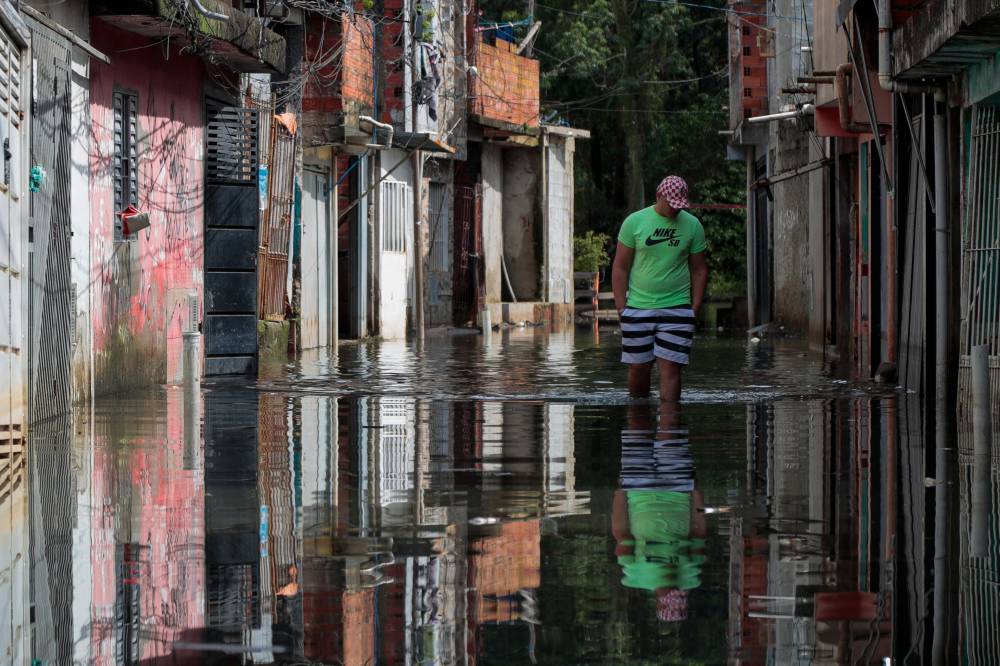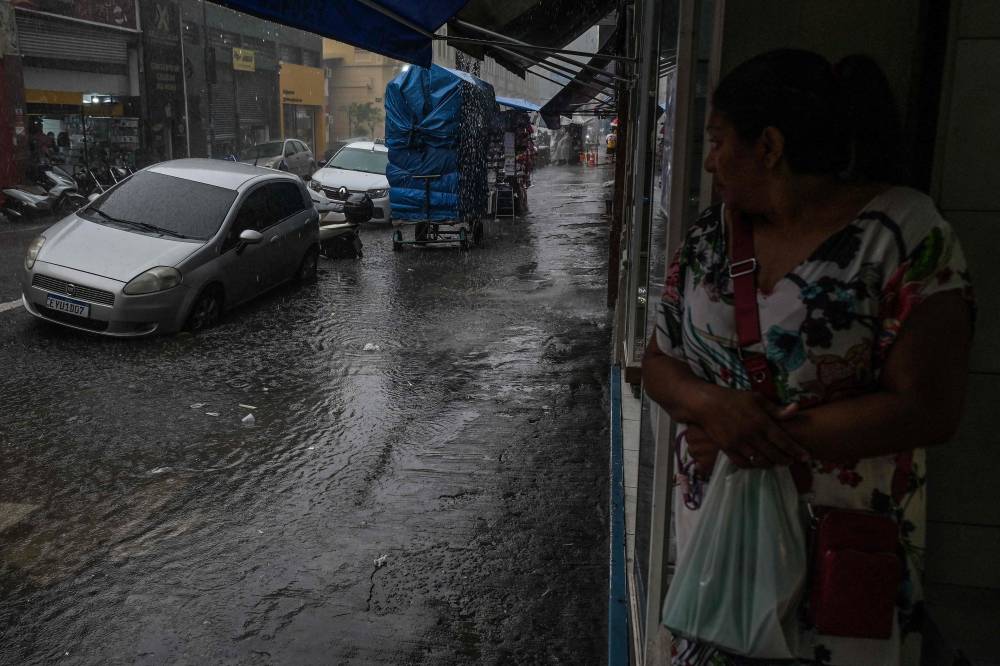How Climate Change Turned Sao Paulo's Light Drizzle Into a Torrential Storm

SAO PAULO - Despite currently experiencing mild temperatures throughout the year, São Paulo used to have weather conditions similar to those of London.
That’s how São Paulo earned its fame for "garoa" -- a light nighttime rain resulting from humid coastal air meeting the city's cooler temperatures -- that renowned musician Caetano Veloso praised it in his 1978 song "Sampa," named after the city’s moniker.

In these times, though, gentle showers have become uncommon, and severe storms are progressively becoming more typical in the metropolis home to 12 million inhabitants.
Local residents Cristiane Andrade and Raquel Nascimento have experienced the abrupt impact of São Paulo's shifting weather conditions, changes that experts connect to climate change.
In March, they left work by car for a quick bite when a sudden storm caused a tree to fall and crash onto their windshield.
The duo, saved by the firefighters, barely cheated death by a narrow margin.
"It was a moment of terrible panic, a gusting wind whipped up in a few seconds," Andrade, a 43-year-old hospital worker, told AFP.
The rising occurrence of severe weather conditions is reshaping the perception of an economic center that values stability and efficiency over the lively yet violence-ridden environment of Rio de Janeiro.
Thousand-kilometer tailbacks
Over the past twenty years, the city has experienced ten storms categorized as "extremely hazardous" by the National Institute of Meteorology — this number is more than twice what was recorded in the preceding two decades.
One rainy day in March saw traffic snarls in São Paulo stretching over 1,174 kilometers (729 miles) of roads.
Trees falling down pose a significant risk; reportedly, an astounding 2,000 of them have been uprooted by storms this year alone, as stated by São Paulo city authorities.
Researchers attribute the rise in temperatures to a combination of global warming and rapid urban development. This increase, coupled with the area’s high humidity, leads to severe conditions.
Over the last 40 years, average summertime day temperatures in São Paulo have climbed by four degrees Celsius, reaching 24.2 degrees Celsius (from 68.4°F to 75.6°F), as reported by meteorological authorities.
Climatempo TV network’s meteorologist, Cesar Soares, stated that today one must consider São Paulo nearly like a tropical city.
Living with risk
The alterations are having an impact on the city that drives Brazil's economy.
Almost half of the firms questioned by the São Paulo state chamber of commerce reported that their earnings were affected by severe weather conditions in the previous year.
Flooding and electricity outages ruined goods and led to production halts, whereas the high temperatures disturbed logistics networks.
The most severe drought since record-keeping started in Brazil, which experts have similarly attributed to climate change, was followed by storms in October that caused a blackout affecting almost 1.5 million households in São Paulo.
The authorities are attempting to adjust to the disruption.
Residents have received 14 storm alerts since December from the state Civil Defense agency. The text message warning system will eventually be extended to all Brazilians.
Steps are being taken as well to eliminate what are known as "heat islands" -- these are urban zones with high population density where temperatures frequently soar several degrees higher than normal.
The urban foliage — including areas covered by trees, parks, rooftop gardens, and street vegetation — has increased from 15 percent to 26 percent over the last three years.
And the city's drainage system is being revamped to fight flooding.
However, São Paulo's most impoverished neighborhoods are still battling an increasing wave of disaster.
In Jardim Pantanal, a low-income neighborhood on the banks of the Tiete River, residents had to use water drums as rafts to evacuate children during floods in February.
"The government suggested moving the families, but many of us prefer not to depart," stated Pedro Guedes, a 66-year-old community leader.
Lieutenant Maxwell de Souza, who speaks for the Civil Defense, admitted that evacuating everybody each time a locality gets flooded is just not practical.
"That's why we're trying to create a culture of coexistence with risk: since we can't control climate change, we need resilient communities," he said. - AFP
Posting Komentar untuk "How Climate Change Turned Sao Paulo's Light Drizzle Into a Torrential Storm"